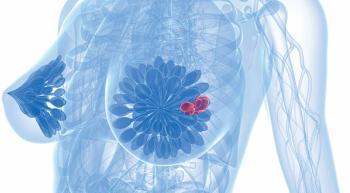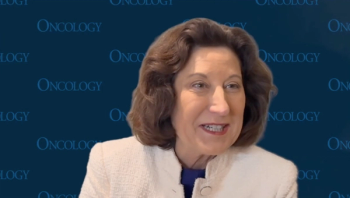
Neoadjuvant Pertuzumab Adds Benefit in HER2-Positive Breast Cancer
The addition of pertuzumab to trastuzumab and docetaxel offers significant improvement over other options in patients with HER2-positive breast cancer.
The addition of pertuzumab to trastuzumab and docetaxel in the neoadjuvant setting offers significant improvement over other options in patients with operable or locally advanced/inflammatory HER2-positive breast cancer. Five-year results of the NeoSphere trial (
The primary analysis of the randomized phase II trial has already been published, said lead author Luca Gianni, MD, of Ospedale San Raffaele in Milan, Italy. They showed that pertuzumab, trastuzumab, and docetaxel (107 patients) had improved pathologic complete response (pCR) over three other groups: trastuzumab plus docetaxel (107 patients); pertuzumab and trastuzumab (107 patients); and pertuzumab and docetaxel (96 patients). All patients went on to have surgery, and Gianni noted that all patients with the exception of the pertuzumab and trastuzumab group had identical chemotherapy backbone and all had the same adjuvant trastuzumab following surgery.
The new results were from an underpowered, pre-planned interim analysis at 5 years. The pertuzumab, trastuzumab, and docetaxel group had a better progression-free survival (PFS) rate at 5 years, at 86%; the other groups had PFS rates of 81%, 73%, and 73%, respectively.
The results were similar for disease-free survival (DFS), with the three-agent arm at 84%, compared with 81%, 80%, and 75%, respectively.
An analysis of all the treatment arms combined showed a beneficial effect of pCR. At 5 years, those with pCR had a PFS rate of 85%, compared with 76% for those with no pCR, for a hazard ratio of 0.54 (95% confidence interval, 0.29–1.00).
There was no additional cardiotoxicity observed in the long-term setting, and no other safety signals emerged.
“PFS and DFS are in line with the results of the primary endpoint of pathologic complete response, and suggest a persisting benefit of neoadjuvant pertuzumab added to trastuzumab and docetaxel, despite the use of identical adjuvant therapy,” Gianni concluded. He added that these results support the use of pCR as a primary endpoint and early indicator of benefit in future studies of neoadjuvant HER2-targeted therapies.
Shanu Modi, MD, of Memorial Sloan Kettering Cancer Center, the discussant for the session, cautioned that since the study was not powered for this analysis, the results should only be considered suggestive and descriptive. “However, I think they leave us optimistic,” she said, and noted that the phase III APHINITY trial will yield firmer answers.
Newsletter
Stay up to date on recent advances in the multidisciplinary approach to cancer.















































































